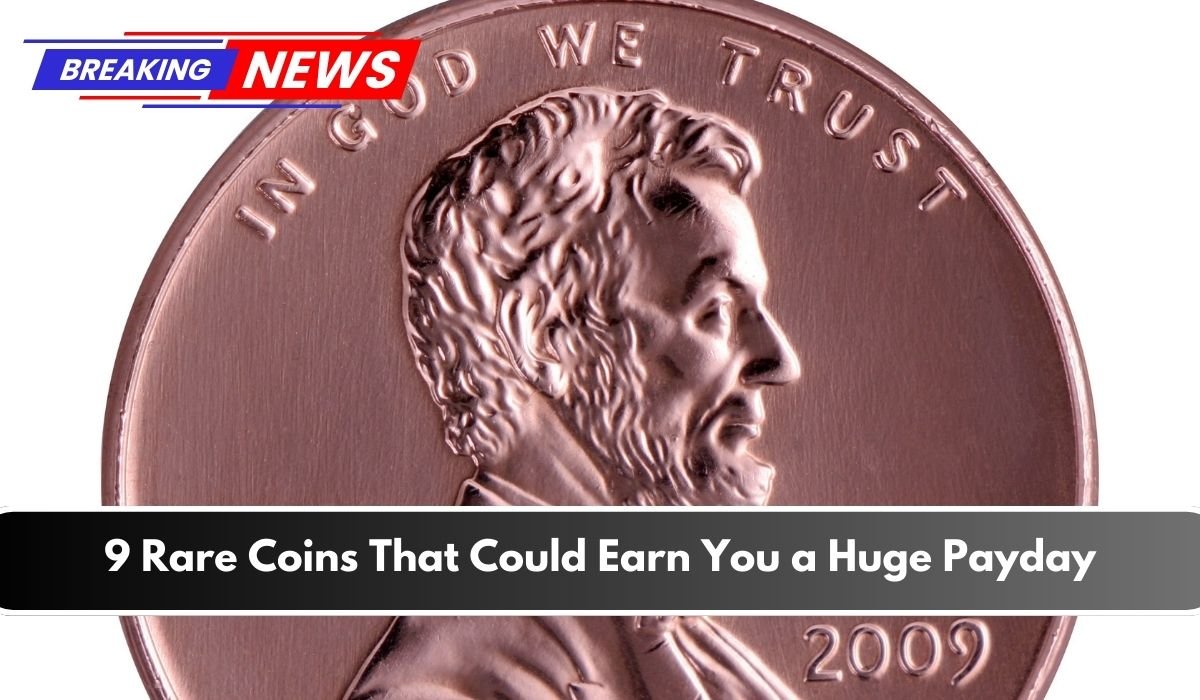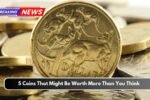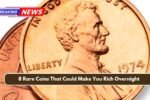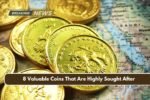Have you ever checked your loose change for hidden treasures? Believe it or not, some coins are worth more than their face value—sometimes even thousands or millions of dollars! These rare coins are like winning the lottery, hiding in old collections, piggy banks, or even in your pocket. If you’re lucky enough to find one, you could be sitting on a fortune.
Let’s take a look at some rare coins that could earn you a huge payday.
1943 Copper Penny
During World War II, the U.S. Mint switched to making pennies from steel instead of copper to save materials for the war. However, a few copper pennies from 1943 were accidentally produced. These rare mistakes are now worth a fortune.
| Coin Name | Estimated Value |
|---|---|
| 1943 Copper Penny | Up to $1.7 million |
How to Identify It
- Stick a magnet to the penny. If it doesn’t stick, you might have a copper one.
- Check the date (1943) and the condition.
- If you think you have one, get it authenticated!
1955 Double Die Penny
This penny has a noticeable printing error, making it highly valuable. The “double die” effect makes the letters and numbers on the coin appear doubled. It’s like a blurry photo but on a coin.
| Coin Name | Estimated Value |
|---|---|
| 1955 Double Die Penny | Up to $125,000 |
How to Identify It
- Look closely at “LIBERTY” and “IN GOD WE TRUST”—if they appear doubled, you might have a winner.
- The clearer the doubling, the more valuable the coin.
2004 Wisconsin Extra Leaf Quarter
This modern quarter has a unique minting error where an extra leaf appears on the ear of corn on the back of the coin. It’s a small mistake that turned into a big payday for collectors.
| Coin Name | Estimated Value |
|---|---|
| 2004 Wisconsin Extra Leaf Quarter | Up to $6,000 |
How to Identify It
- Check the corn husk on the back of the quarter. If there’s an extra leaf, you might be in luck.
1969-S Double Die Penny
Similar to the 1955 version, this penny also has a doubling effect on the lettering. Since only a few exist, it’s highly sought after by collectors.
| Coin Name | Estimated Value |
|---|---|
| 1969-S Double Die Penny | Up to $75,000 |
How to Identify It
- Look at the date and letters—if they appear doubled, it’s worth checking with an expert.
1913 Liberty Head Nickel
This is one of the rarest and most mysterious coins in U.S. history. Only five are known to exist, and each one is worth a small fortune.
| Coin Name | Estimated Value |
|---|---|
| 1913 Liberty Head Nickel | Up to $4.5 million |
How to Identify It
- Check for the 1913 date.
- If you suspect you have one, get it appraised immediately!
1972 Double Die Penny
Another penny with a double die error, this one from 1972. The mistake makes the words and numbers look slightly shifted.
| Coin Name | Estimated Value |
|---|---|
| 1972 Double Die Penny | Up to $1,500 |
How to Identify It
- Look for doubling on the words and numbers.
2000 Sacagawea Dollar with a Mule Error
This rare error coin was accidentally struck with the front of a Sacagawea dollar and the back of a state quarter. The mistake makes it incredibly valuable.
| Coin Name | Estimated Value |
|---|---|
| 2000 Sacagawea Dollar Mule Error | Up to $250,000 |
How to Identify It
- The coin will have Sacagawea on one side and a state quarter design on the other.
1870-S Seated Liberty Dollar
This historic silver dollar is extremely rare. Only a few were ever made, making them highly valuable to collectors.
| Coin Name | Estimated Value |
|---|---|
| 1870-S Seated Liberty Dollar | Up to $2 million |
How to Identify It
- Look for the “S” mint mark below the eagle on the reverse side.
Conclusion
Finding one of these rare coins is like discovering a hidden treasure. While the chances are slim, it’s always worth checking your spare change, old piggy banks, or family coin collections. Even if you don’t hit the jackpot, collecting coins can still be a fun and rewarding hobby. So, next time you come across an old penny or quarter, take a closer look—you might be holding a fortune in your hands!
FAQs
Where can I sell my rare coin?
You can sell rare coins at coin shops, online marketplaces, and auction houses specializing in collectibles.
How do I know if my coin is valuable?
Check for minting errors, unusual dates, and rare designs. If you suspect a coin is valuable, have it
Can I find valuable coins in everyday circulation?
Yes! While rare, some valuable coins still pop up in pocket change or coin rolls from banks.
Are all old coins valuable?
Not necessarily. Age alone doesn’t determine value—rarity, condition, and demand play a big role.
Should I clean my rare coin before selling it?
No! Cleaning can lower a coin’s value. Always leave it in its original condition.




